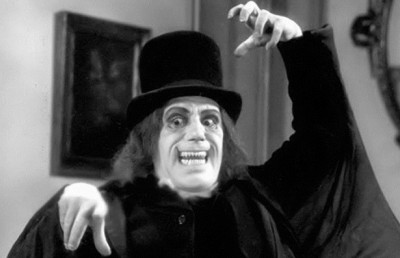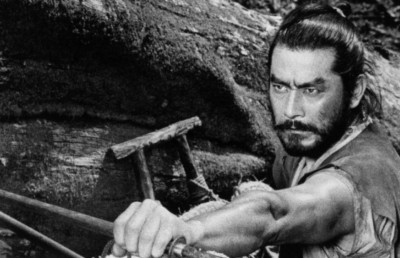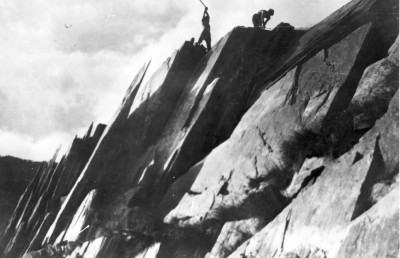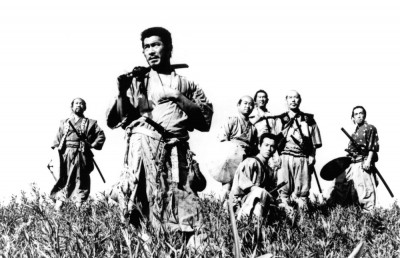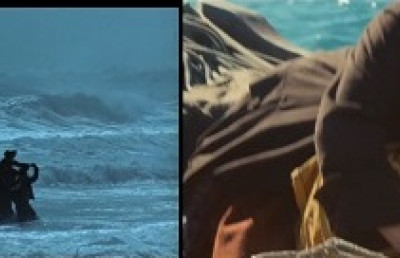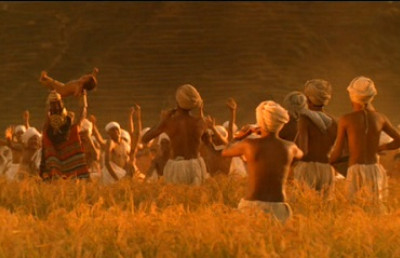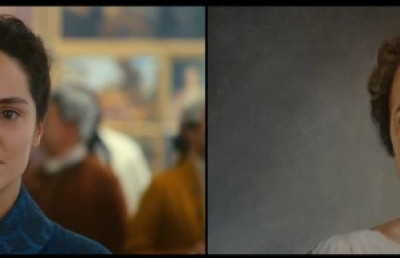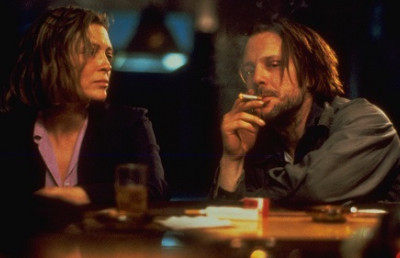What Makes Charlie Chaplin Endure
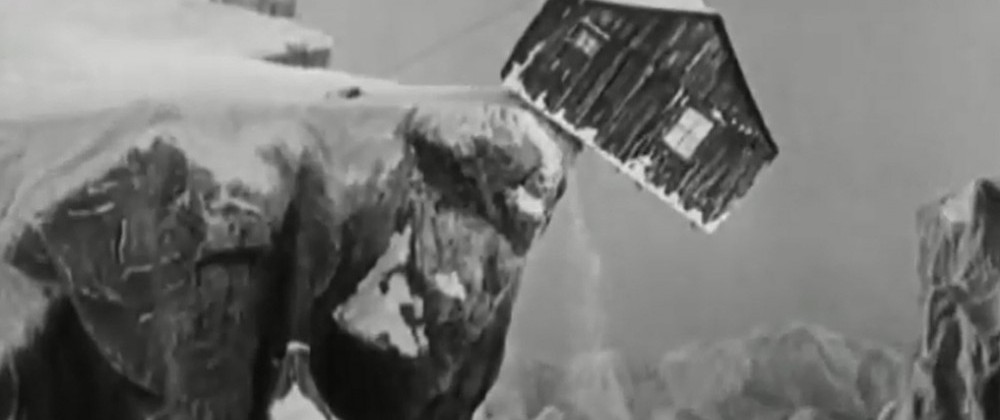
Currently there is a major touring retrospective across several North American cities of restored 35mm prints of Charlie Chaplin’s major feature films, which include (among others) comic classics The Kid, The Gold Rush, City Lights, Modern Times, and The Great Dictator. The tour is scheduled to play in Montreal from Dec. 10-23 at the Cinema du Parc. It is hard to imagine (though not impossible) a similar retrospective (as large) for one of Chaplin’s great contemporaries. And yet, Harold Lloyd in the nineteen twenties was more popular in the sense of making more films and selling more tickets (11 features to Chaplin’s 5), Buster Keaton may not have been as much a populist as either Lloyd or Chaplin (1889-1977) but has remained a more modern figure due to his involved cinematic style and his more ironic and detached persona (meaning that Keaton’s humor was more dependent on visual poetry, editing, pacing, rather than the more character/plot based humor of Chaplin and Lloyd) . Harry Langdon was and remains one of the oddest, most unique of the great comedians. Laurel and Hardy remain the greatest and most popular comedy team of all-time, but their greatest works were done in their short films made between 1927 and 1933. So what is it about Chaplin that makes his work so enduring? Why do people still watch him today? What is his enduring legacy?
1) Chaplin was the first comedian to add pathos to humor.
This is one of the first things that comes to mind when people think Chaplin, and yet its importance cannot be overstated. Up until Chapin comedy was done at a breakneck pace with physicality and movement the comedian’s main tools of the trade. Chaplin himself used these tools to their fullest, which was something he learned at Sennett’s Keystone studio, where subtlety was not on the agenda. But things began to change with the 6th film he made at Essanay studios (where he moved to after Keystone), The Tramp. There is one specific moment which can be seen as decisive: The tramp is chasing some thieves away from a farmhouse. The chase continues over the backyard fence. The farmer shoots at the thieves but fells Chaplin by mistake. Unlike the hundreds if not thousands of incidents of roughhouse antics and slapstick mayhem that came before, where characters would shake off the effects of the violence and continue about their merry way, something different happens here. The little Tramp character really gets hurt, and really feels the pain. Chaplin writhes in some discomfort, grabs at his shin area and grimaces in pain. A smattering of blood is also visible. Real pain had never before been on the cards in silent comedy, but the landscape was about to change with this moment. As other critics have noted about this film, it is also the first instance where we see the Tramp enact a moral act (returning stolen money to its victim). The real pain was not important for making violence possible in comedy, but because it made audiences feel sorry for the injured Chaplin, opening up the landscape for more involved emotional interplay and empathy between Chaplin and his audience.
2) Chaplin instinctively knew how to engage the camera.
Of all the genres, comedy is the one which consistently breaks the fourth wall, where characters stare into the camera, talk to it, and make asides beyond the narrative (just think of Groucho Marx’s self-deprecating comments to the camera, Edgar Kennedy’s slow burn frustrated camera stares, or Oliver Hardy’s myriad of facial pantomimes which plea with the audience to feel his humiliation). In only his second film, Kid Auto Races at Venice, Chaplin understood the importance of playing to the camera. The whole film revolves around a character that appears to involuntarily step in front of a camera crew out filming a baby-cart race. The character plays ‘dumb’ feigning ignorance of the cinema apparatus, but in fact his actions suggest that he is keenly aware of what he is doing, crowding his way into the frame, ruining shot after shot for the on-screen director (played by the film’s actual director Henry Lehrman either), shoving other people (including children) out of the lenses view, and ‘hogging’ the frame to himself. In an indirect way, this little, mainly improvised film, shot on location with real-life spectators, some covering their face from the camera, obviously displeased at being filmed, foreshadows Chaplin’s dictatorial desire for absolute control of the whole creative process (apparently Chaplin did not get on well with the film’s actual director, Henry Lehrman). Keaton may have known the inner mechanics of how a camera works, famously taking it apart piece by piece and rebuilding it to better ‘understand’ filmmaking, while Chaplin knew the human potential of those mechanics (a distinction which symbolically represents the philosophical differences between Chaplin and Keaton).
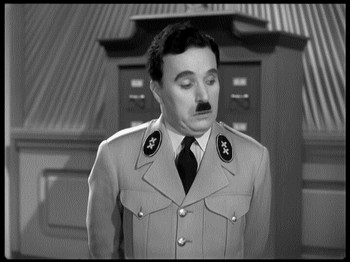
3) Chaplin was the first comedian to consistently add social criticism to comedy.
One could ask: What is the criteria for the greatest comedian? Is it the comedian who produces the most laughs, the funniest? Or is it the comedian who, along with being funny, says something about human nature, society (this was the criteria held up by Gerald Mast in his classic text, The Comic Mind)? If the latter, Chaplin would have it above someone like Lloyd (who was an adroit constructor of gags) or the Three Stooges (who left aside build-up for a constant barrage of slapstick). The key early films are Easy Street (1917), which draws on Chaplin’s own poverty-riddled upbringing to present a mixture of wildly funny slapstick and observations on poverty and urban crime (the street where Chaplin was born was similarly named, East Street) and The Immigrant (1917, immigration), followed by Modern Times (1936, modernity, industrialization, Taylorism) and Monsieur Verdoux (critique of capitalism).
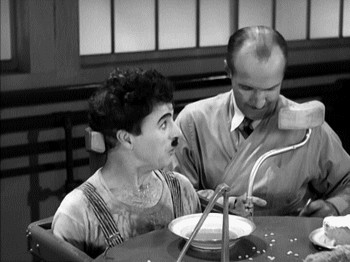
4) Chaplin played the ‘underdog’ moniker like the proverbial violin.
Why does Chaplin still resonate today, as he did 80 years ago? What makes his persona still relevant? Regardless of the historical era, at every point in time there are people who feel left out, alienated outsiders, and Chaplin speaks to that person. Think about the opening montage of Modern Times, where we dissolve from a close-up of a clock, to a flock of sheep hurrying forward, to a similarly framed crowd of people scurrying up the subway stairs at morning rush hour. If you look closely at the sheep, in the middle, you’ll see there is one black sheep, all the rest are white. Chaplin is that black sheep, forever feeling the push and shove of conformity, but forever remaining on the outside looking in (think of the near tragic outpouring of emotions he elicits in the shot of the Tramp looking into the saloon window to watch a party he is not invited to in The Gold Rush). On the one hand Chaplin seems to want to join the social whole, but on the other hand his temperament seems ill-suited to being tied down to one single social role. The theatre/film critic Walter Kerr, writing in his sublime treatment of silent comedy, The Silent Clowns, expresses the Tramp’s double-edged sword better than anyone ever has:
The tramp is a philosophical, not a social, statement. And it was a conclusion to which Chaplin came, not a choice he imposed from the outset. The tramp is the residue of all the bricklayers and householders and bon vivants and women and fiddlers and floorwalkers and drunks and ministers Chaplin played so well, too well. The tramp was all that was left. Sometimes the dark pain filling Chaplin’s eyes is in excess of the situation at hand. It comes from the hopeless limitation of having no limitation” (The Silent Clowns p. 85).
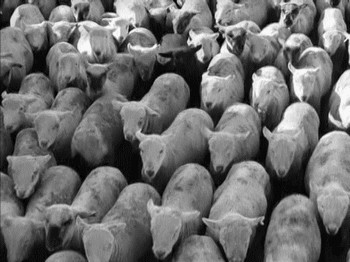
5) Chaplin was the ultimate control freak.
Perhaps no one will ever be able to wield the sort of creative control over a series of major (fiction) film works, over such a long haul, as did Charlie Chaplin. From about 1918 (Mutual Pictures, then UA 1919-1939), to the end of his career, Chaplin maintained full creative control of his films, which is an amazing record of independence. Without giving it any sort of extensive research, I would guess that Chaplin was the first film artist to hold creative control over almost every aspect of the filmmaking stage: writing, directing, acting, producing, composing, etc. The impact this obsession with control had over his film output is alarmingly evident, with the ratio of films made to shooting schedule decreasing dramatically (Chaplin made 81 films, 70 of them shorts).
CHAPLIN’S SHOOTING CHRONOLOGY
Keystone (1914):
1st film: Making a living (1914)
Last film: His prehistoric past (1914)
35 films in 12 months
Essanay (1915-16):
1st film: His new job (1915)
Last film: Police (1916)
14 films in 12 months
Mutual (1916-17):
1st film: The Floorwalker (1916)
Last film: The Adventurer (1917)
12 Films in 18 months
1st National (1918-23):
1st film: A Dog’s Life (1918)
Last film: The Pilgrim (1923)
8 Films in 60 months
United Artists (1923-52):
1st film: A Woman of Paris (1923)
Last film: Limelight (1952)
8 Films in 348 months
British Productions (1957-1967):
1st film: A King in New York (1957)
last film: A Countess from Hong Kong (1967)
2 Films in 120 months
From 1914 to 1967 Chaplin’s film to shooting schedule ratio went from making 35 films in 1 year, to making 2 films in 10 years!
6) What is his most important film?
My own personal favourite of Chaplin’s feature films is Modern Times, the film which ‘retired’ the tramp persona (it ends with the iconic shot of the Tramp and the ‘Girl’ Paulette Goddard, walking down the proverbial dirt road), scaled the heights of blending hilarious physical comedy and pantomime with important social commentary, and which was his last silent film (there is sound but no real sync dialogue), as it had to be, since it represented the ‘silencing’ of the Tramp character. But the single film which may be his most important, for its global impact, its bravery, and its lasting relevancy, is The Great Dictator.
One has to remember that between the moment when Chaplin first thought of making the film, straight through to the making of the film and up until its release (1937-1940), the United States of America were not yet involved in World War 2. There were great debates among politicians and civilians as to whether America should become involved, with the majority being in favour of non-intervention. Hence a high profile film starring Charlie Chaplin that lampooned Adolf Hitler and the Nazis was seen as highly contentious and controversial, for a host of reasons, from within Chaplin’s close circle (United Artists, who feared censorship of the film in neutral or pro-Germany markets, his friends) and at large. There had been many anti-Nazi films made prior to The Great Dictator, and even a comedy short by the irrepressible Three Stooges, You Nazty Spy!, directed by Jules White, and released on the 19th of January 1940, predating Chaplin’s The Great Dictator (October 15, 1940) by nearly nine months. The Stooges (who will be featured in a future issue of Offscreen in an essay by Vito Adriaensens, “Shtick’em up: Remembering the Three Stooges”) also made a follow-up, I’ll Never Heil Again, also directed by White, released on the 4th of July, 1941. Hence You Nazty Spy! maintains the honor of the first on-screen spoof of Adolf Hitler, with Moe in the lead role. But, with all due respect to the Three Stooges (and I’m a fan), the outreach of Chaplin in this role was far more dramatic. According to Marco Ferro’s Cinema and history, there were 18 (dramatic) anti-Nazi films screened in the U.S. in 1939; more than in France or England, where the war was already being waged; but none were as high profile, and blatantly so, as Chaplin’s The Great Dictator.
Chaplin had been active on the anti-Nazi front, and active in the movement to push for the opening of a second European front to help the Russians, along with other members of the “Hollywood Anti-Nazi league,” which was formed in 1936 and had a peak of 5,000 members. By the mid-1930’s Chaplin had a reputation as a “parlor pink,” as a result of favorable statements on Bolshevism, being pro-New Deal, pro-Socialist Upton Sinclair in his run for Governor of California, his friendship with certain Russians, notably Sergei Eisenstein, the leftist interpretations of his work by leftists, notably Russians, and an infamous speech he gave in 1942 which started with the words, “dear comrades.” This left wing rhetoric was fine and permissible during the progressive moment of the 1930s, but with the political climate changing and anti-Communist sentiment rising, arch conservatives would equate being pro-Left/Communism with being anti-American. All of this would come to a slow boil under the witch hunts of J. Edgar Hoover and his crusade against the ‘commies,’ a crusade in which Hoover would exploit the high profile status of Chaplin by making him a formidable ‘enemy of the state.’
To return to The Great Dictator, it was released at a time which made it extremely topical (the war, Hitler, Fascism), and the film sparked heated debate around the issue of intervention/non-intervention, and the thorny issue of the film’s final speech. The film ended up being Chaplin’s biggest box-office hit. Debates raged on these two fronts, although it must be said that the ultimate message of whether the film is pro-war/interventionist or pacifist/non-interventionist is somewhat muddled. The confusion is partly tied to the final speech. Up until this point in the narrative, Chaplin portrayed two characters, clearly delineated, Adenoid Hynkel, the dictator of Tomania, and the ‘little Jewish barber.’ In this final scene the barber is camouflaged as Hynkel, dressed in Nazi regalia, and is cornered into delivering his speech. As the speech heats up it becomes evident that the tone of it is beyond the established personality of either Hynkel or the little barber. The debates around the speech were, once again, two-fold. One dealt with an aesthetic issue: does Chaplin, in this speech, step out of both characters, and speak directly as Chaplin? Those that believe he does split into two camps. Some argued that the slip into Chaplin-as-author constitutes an aesthetic breech of the integrity of the film. Others argued that Chaplin did a brave thing in using this comedy to make a heartfelt (if muddled) social message. They saw it as a brave political act.
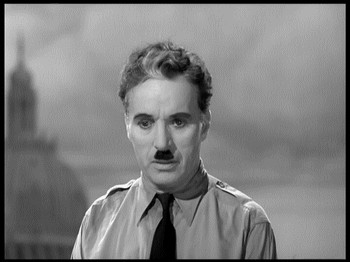
And the second debate revolved around the subject of the speech’s message: what exactly does the speech mean in relation to real world politics? The complete speech, written with great deliberation by Chaplin, is striking in its potential to be interpreted in many different ways. It is available in its entirety here, but essentially it meanders from liberal humanism (“I should like to help everyone if possible; Jew, Gentile, black men, white.”) to veiled anti-capitalism (“Greed has poisoned men’s souls.”) to veiled socialism (“And the good earth is rich and can provide for everyone.”) and to an anti-Nazi call to arms (“And so long as men die, liberty will never perish. Soldiers! Don’t give yourselves to brutes, men who despise you and enslave you; who regiment your lives, tell you what to do, what to think and what to feel!”)
In the end, it was too communistic for the right, and too sentimental for the left. But recalling Kerr’s “hopeless limitation of having no limitation,” had the message conformed obiously one way or the other, it would not be Chaplin.
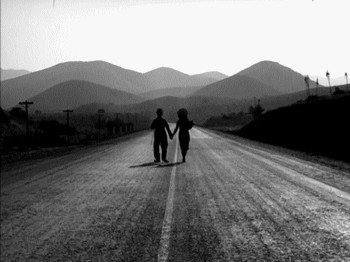
Goodbye Charlie…but certainly not forever
Bibliography
Ferro, Marco. “On American Anti-Naziism 1939 -1943,” in Cinema and History, Naomi Greene trans., Detroit: Wayne State Press, 1988, 111-117.
Kerr, Walter. The Silent Clowns. New York: Knopf, 1975.



